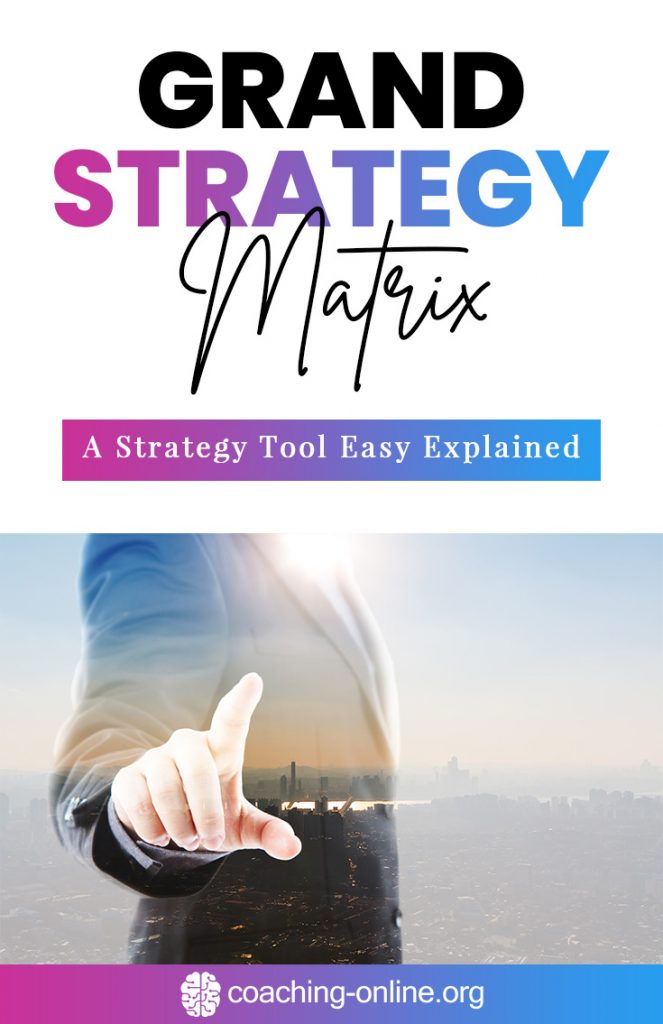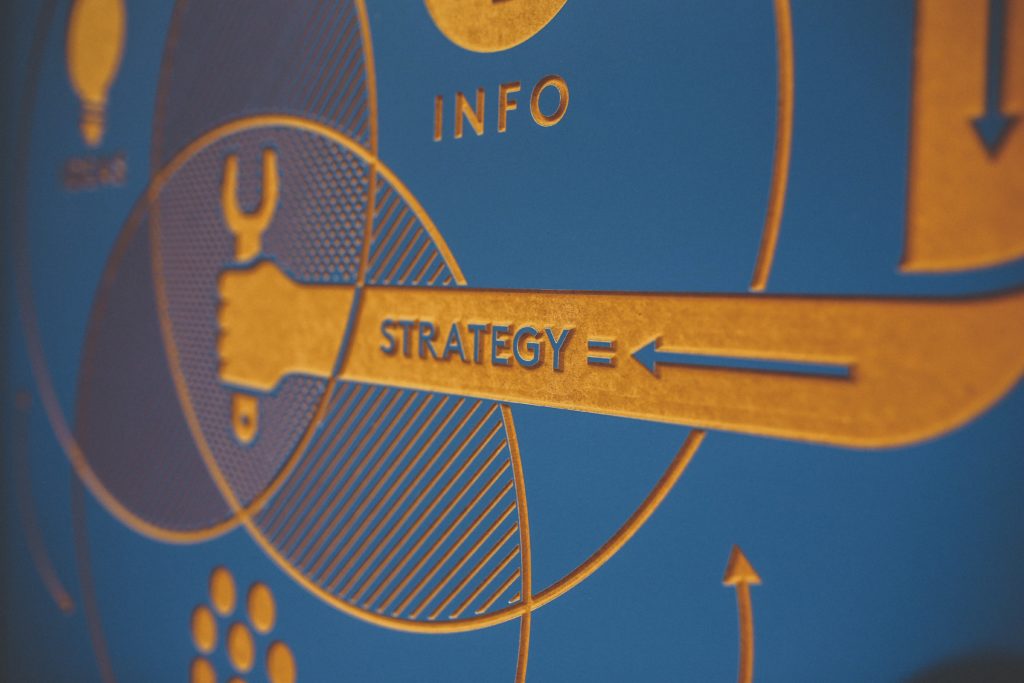The Grand Strategy Matrix is one of the golden standards for businesses.
Most importantly, both big and small businesses alike can benefit from a grand strategy matrix.
In this article, we’ll share valuable, easy-to-digest information about this unique tool.
Join us below.

What Is A Strategy Matrix?
Before we dive deeper into what a grand strategy matrix is, let’s start with the basics.
A strategy matrix is a magnificent tool.
It offers easy access to different solutions to the business model.
In a nutshell:
A strategy matrix filters out important information.
It provides excellent solutions that have been successfully applied in case studies.
What Is A Grand Strategy In Strategic Management?

A grand strategy is a corporate level strategy.
Also known as Corporate Strategies and Master Strategies, the four grand strategies include:
- Stability Strategy
- Expansion Strategy
- Retrenchment Strategy
- Combination Strategy
Based on the available set of alternatives, these strategies share one common goal:
to help a business organization reach its long-term objectives.
Thus, the organization can choose the plan/s that will be the most beneficial in the long run.
Also, master strategies can include:
- Market Growth
- Product Development
- Turnaround Strategy
- The Strategy of Liquidation
- Stability Strategy
How Do You Create A Grand Strategy Matrix?

As a rule of thumb, mind that your strategies will be UNIQUE. After all, your business IS unique.
The major goal of a properly developed grand strategy matrix:
help businesses evaluate their one-of-a-kind strengths and weaknesses.
Also, you will be able to examine whether your business growth goes rapidly or slowly.
In return, you can get new insights to help you in growing your business.
Ultimately, you can take advantage of the best opportunities for your company/ companies.
The secret to the success of a well-plotted Grand Matrix Strategy?
It’s all about understanding and utilizing the Four Quadrants.
Shortly put, each organization will fall into one of the four quadrants.
Next, every organization should adopt the set of strategies in the specified quadrant.
A quick example question:
Will a business benefit from horizontal integration strategies or exactly the opposite?
..and a quick answer:
Mind the strong, or respectively, the weak competitive position in the quadrants. These are extremely important parameters.
Now, let’s dive deeper into the Four Quadrants below.
Quadrant I

Quadrant I = Strong Competitive Position + Rapid Market Growth.
Quadrant I refers to divisions or firms operating in a fast-growth market environment.
Also, it refers to firms/divisions possessing a strong competitive base.
Moreover, firms located in Quadrant I are in a magnificent position strategically.
The best strategies for firms/divisions positioned in the first quadrant include:
- Market Development
- Market Penetration
- Product Development
- Forward Integration
- Backward Integration
- Horizontal Integration
- Related (Concentric) Diversification
Quadrant II

Quadrant II = Weak Competitive Position + Rapid Market Growth.
Quadrant II refers to firms that need to work on improving their competitiveness.
The marketplace approach of Quadrant II firms requires serious work and focused efforts. In return, businesses can boost their competitive approach.
In such cases, suitable strategies include:
- Market Development
- Market Penetration
- Product Development
- Horizontal Integration
- Divestiture
- Liquidation
Some Quadrant II firms may benefit the most from applying an intensive strategy.
Quick Example:
Firms can go into the horizontal integration subject when it comes to resources’ availability.
However, some Quadrant II firms are to foresee faster market growth as opposed to the firm’s growth.
Altogether with foreseeing a rather strongly competitive environment, such firms are to benefit the most from divestiture of some of their divisions.
Quadrant III

Quadrant III = Weak Competitive Position + Slow Market Growth
With a weak competitive position, Quadrant III firms must make QUICK, drastic changes.
Firms in a weak competitive position + slow growth should adopt an alternative strategy.
Or else, such firms/divisions will face liquidation. In fact, liquidation is one of the final options for businesses positioned in Quadrant III.
It is recommended that Quadrant III firms pursue retrenchment as their first option.
Quadrant III strategies include:
- Retrenchment
- Concentric Diversification
- Conglomerate (Lateral) Diversification
- Horizontal Diversification (Related or Unrelated)
- Divestiture
Quadrant IV

Quadrant IV = Strong Competitive Position + Slow Market Growth
Slow market growth and a strong competitive position can be quite a challenging combination.
On the one hand, Quadrant IV organizations generate high cash flow.
However, such organizations have limited needs for internal growth.
To conquer the slow market growth + strong competitive position tandem, the strategies include:
- Horizontal Diversification (Related or Unrelated)
- Concentric Diversification
- Conglomerate (Lateral) Diversification
How Do You Find the Grand Strategy Matrix?
You can easily find and download the grand strategy matrix excel template online. For FREE.
Heads Up:
Always make sure to investigate the privacy policy of the website you choose. This way, you will avoid exposing your personal data to threats.
Bonus Tip:
Using the Grand strategy matrix helps in making the most effective strategic decisions.
Nonetheless, the Grand strategy matrix methodologies may actually work even better.
How?
When these strategies are in tandem with SWOT Matrix strategies.
How is that possible?
Because of the invaluable synergies in the powerful combination of SWOT + Grand strategy.
How Do You Do Ansoff Matrix Analysis?
How to do Ansoff matrix analysis in 3 steps (the easy and short explanation):
Step 1:
Download (or create) your Ansoff Matrix worksheet.
Step 2:
Investigate each option by conducting a Risk analysis.
Step 3:
Pick the option that works best for your business.
Finally, get down to applying the selected option.
Some other popular tools for formulating feasible strategies include:
- BCG Matrix
- Space Matrix
- SWOT Analysis
- IE Matrix
All in all, there are different strategy options to choose from.
Your smartest move?
As a rule of thumb:
Explore the variety of alternative strategies carefully in advance.
Also, firms’ managers can consider hiring a professional career coach to work with.
To illustrate this, a certified life coach helps people improve on a personal level.
Meanwhile, career coaches are trained to boost performance in the work-life niche.
There are various career coaching experts that can help in every business industry.
Some of the relevant career-related coaching services include but are not limited to:
- market development,
- strategic position development,
- executive leadership development.
Conclusion

The Grand strategy matrix is a wonderful tool you can use in your best business favor.
Important note (and free tip):
A winning business strategy = making a winning choice.
Yes, a strategy is all about choice, and the grand strategy matrix tool is no exception.
In the 21st century, we can witness the rise and the fall of any (growing) industry in the blink of an eye.
This is especially relevant nowadays. After all, the COVID-19 pandemic has changed the world forever since April 2020.
We are living in an era when the word COMPETITIVE is a “do-or-die-trying” phenomenon. So, businesses must be FLEXIBLE.
Can your organization cope with slow growth using the unique strategy matrix?
Because I firmly believe this is possible.
What is your experience with using this (and/or other) successful business tool?
Join us in the comment section.
Related Content
Career Coach Online: Top 27 Coaches, FAQ, Certifications – Everything You Need to Know
Online Life Coach: The Complete Guide
Best Executive Leadership Coaching Online
